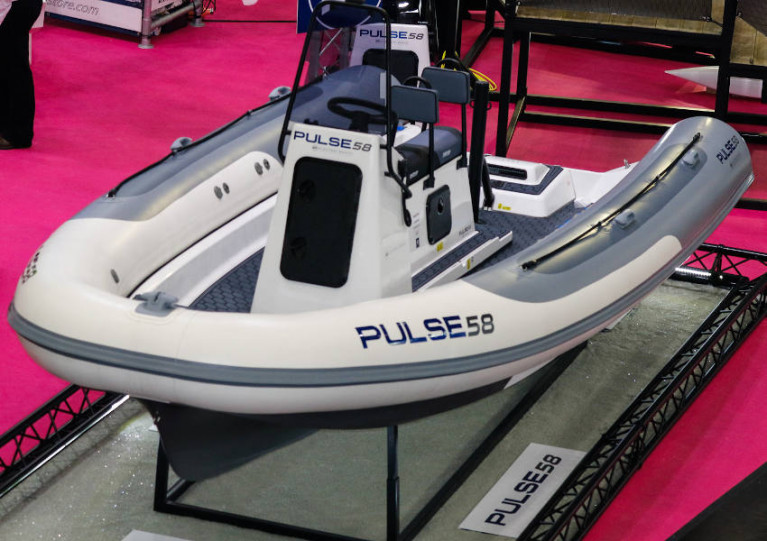Displaying items by tag: Pulse58
‘Game Changer’ Electric RIB Officially Launched By RS At Boot Düsseldorf
The ‘game changer’ Pulse58 was officially launched at boot Düsseldorf yesterday (Sunday 19 January), and RS joint chief executives Alex Newton Southon and Jon Partridge spoke passionately about the vision for this project and what they have planned for the future.
“We are so proud and excited to have brought the first 100% fully integrated electric production RIB to market — the response at the show has been overwhelmingly positive,” said Southon.
“We felt that it was time for change and to challenge habits, from the conversations we’ve been having around the Pulse58 its so apparent we’re not the only people that think it’s important.”
During the launch, Southon, who is technical CEO of RS, talked through the innovative technology used for the 100% electronic RIB and the hydrodynamic design as previously outlined on Afloat.ie.
From initial design, manufacturing and distribution, RS says the Pulse58 is the product of two years of development and has been packed full of sustainable credentials that compliment its zero-emissions propulsion.

This is only the beginning for the sister brand of RS Sailing, with a Pulse42 currently in development and talk of a commercial workboat and superyacht tenders showing the electric is not just limited to the leisure and coaching market.
South went on to thank RAD Propulsion, Hyperdrive, Hypermotive, Jo Richards, Clive Johnson, Raymarine, Marine360 and Tree Aid for all their work in the project.
Partridge added: “RS was born 25 years ago with the dream of changing how people race and enjoy small boats. Our motivations and dreams haven’t changed.
“With the Pulse58 we want people to enjoy the water in a completely new way — we want to reduce the amount of pollution in our waters and enjoy our playing field for a lot longer to come.”
Alongside the launch, RSelectricboats.com has gone live where you can find further information about the Pulse58, the technology behind it and ways to get in touch.





























































